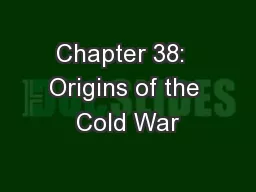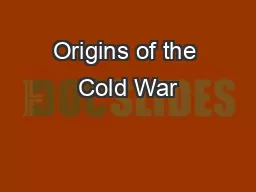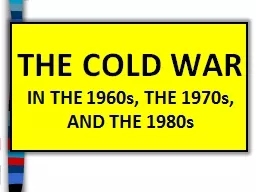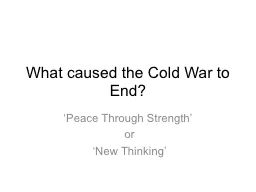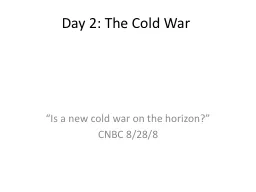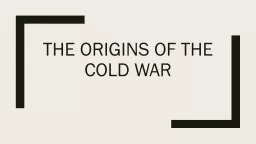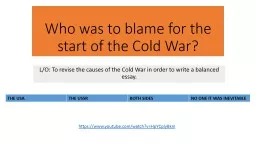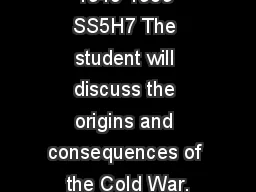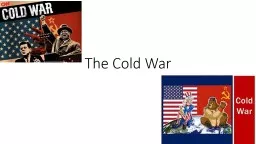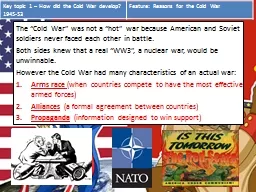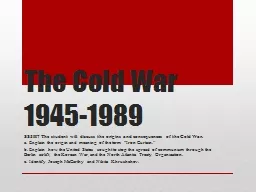PPT-Chapter 38: Origins of the Cold War
Author : ellena-manuel | Published Date : 2018-11-02
the grim struggle for world power between the USA and the USSR in the post World War II world How did the United States and the Soviet Union become Cold War adversaries
Presentation Embed Code
Download Presentation
Download Presentation The PPT/PDF document "Chapter 38: Origins of the Cold War" is the property of its rightful owner. Permission is granted to download and print the materials on this website for personal, non-commercial use only, and to display it on your personal computer provided you do not modify the materials and that you retain all copyright notices contained in the materials. By downloading content from our website, you accept the terms of this agreement.
Chapter 38: Origins of the Cold War: Transcript
Download Rules Of Document
"Chapter 38: Origins of the Cold War"The content belongs to its owner. You may download and print it for personal use, without modification, and keep all copyright notices. By downloading, you agree to these terms.
Related Documents

